Look beyond the obvious at Zumwalt Prairie Preserve in northeastern Oregon
When considering where to travel in Oregon for your next outdoor adventure, dramatic images of snow-capped mountains, rocky beaches or towering dunes probably come to mind. But managers of the Zumwalt Prairie Preserve say a less dramatic, hard-to-reach and desolate landscape deserves love, too.
After visiting the prairie in the Wallowa Mountain area at the end of September, I couldn’t help but agree.
I came to Zumwalt curious about the management and protection of the largest remaining grassland of its type in North America. At 160,000 acres, that may seem like a whole lot of field, but manager of the prairie Jeff Fields said that’s nothing compared to the vast expanse that has now mostly been converted to farmland.
“Grasslands generally and globally are one of the least protected biomes anywhere,” Fields said. “This particular prairie, there was once roughly 20 million acres of it. Now we’re down to the last best bit of it.”
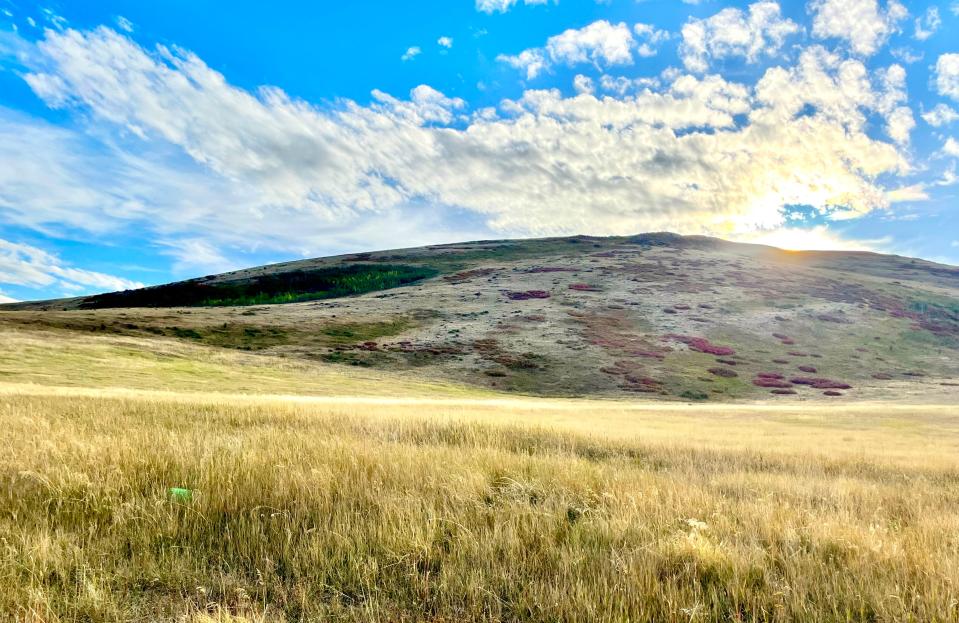
The parcel in Eastern Oregon has been preserved in part by good fortune, Fields said. He said “the core of the prairie,” that extended into parts of Washington and Idaho, has all been plowed up for farming.
“It had very much the same species composition as this prairie does, but it happened to have the misfortune of being lower elevation, a little bit more moisture,” he said. The Zumwalt is rocky, higher and much drier, making it much more difficult to exploit.
The private nonprofit The Nature Conservancy, which manages land for preservation across the world, has the most influence over what’s left. They’ve designated four hiking trails that provide distinct perspectives of the landscape.
The prairie is a draw for those interested in spotting rare bird and plant species, but it's also magical for it's incredible elevation changes, golden grasses and deep peace.
Visiting Zumwalt Prairie Preserve
Fields took me on a tour of the Zumwalt on a beautiful sunny day in September. The drive into the prairie was slow on the windy, hilly 14-mile stretch of the bumpy Zumwalt Road before spotting the single sign marking The Nature Conservancy’s land. By this time, cell service was long gone.
Soon after, Fields and I reached the Duckett Barn, right across from the two most visited trails.
Patti’s Trail is the easiest access, a 2-mile loop on flat prairie land. It would be especially beautiful to take when hoary balsamroot, camas and silky lupine dot the landscape in the spring or when the threatened Spalding’s catchfly blooms in late summer.
A little farther is Harsin Butte, which I scaled for gorgeous panoramic views of the prairie and nearby canyons. Other sites include the Horned Lark Trail and the most remote canyon vistas for the real adventurers.
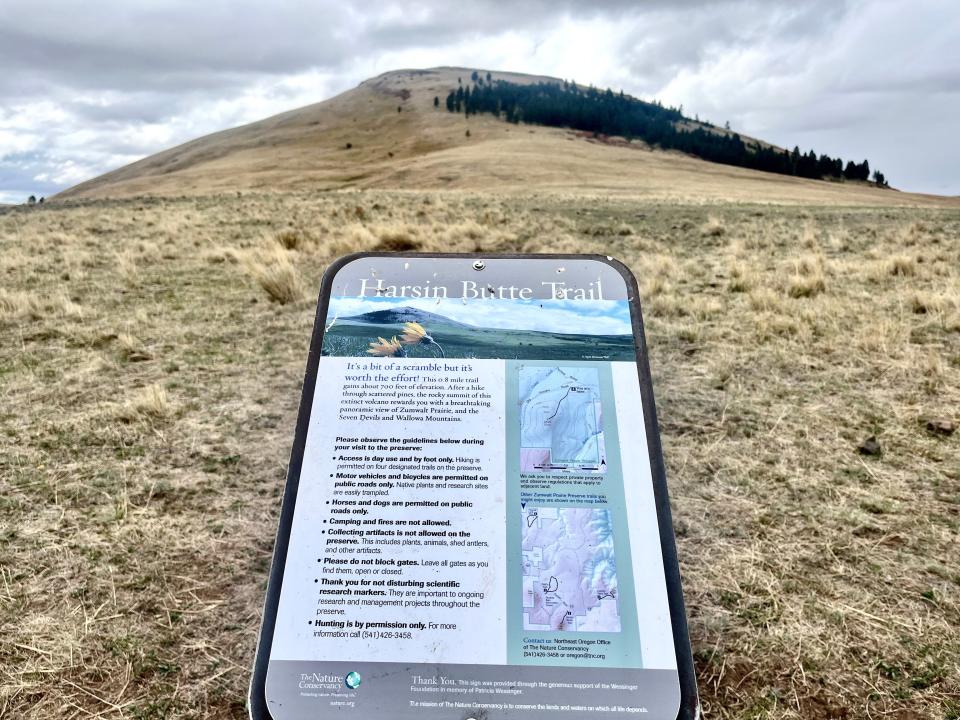
The prairie is all-consuming and feels almost otherworldly, a golden expanse interrupted by sloping hills.
“There's been times when I've come out here, and I've looked around and thought, ‘Oh my God, this is desolate,’” Fields said. “And there's other times I come out and I'm just sort of blown away by the expanse of it.”
Much of the day, wind was the only perceivable sound. The solitude and quiet are what Fields said many love the most about the place. He said a manager of surrounding public lands told him the prairie is where she comes to recharge.
“I thought that was really interesting — for someone with access to all the beautiful places in the county to choose here,” Fields said.
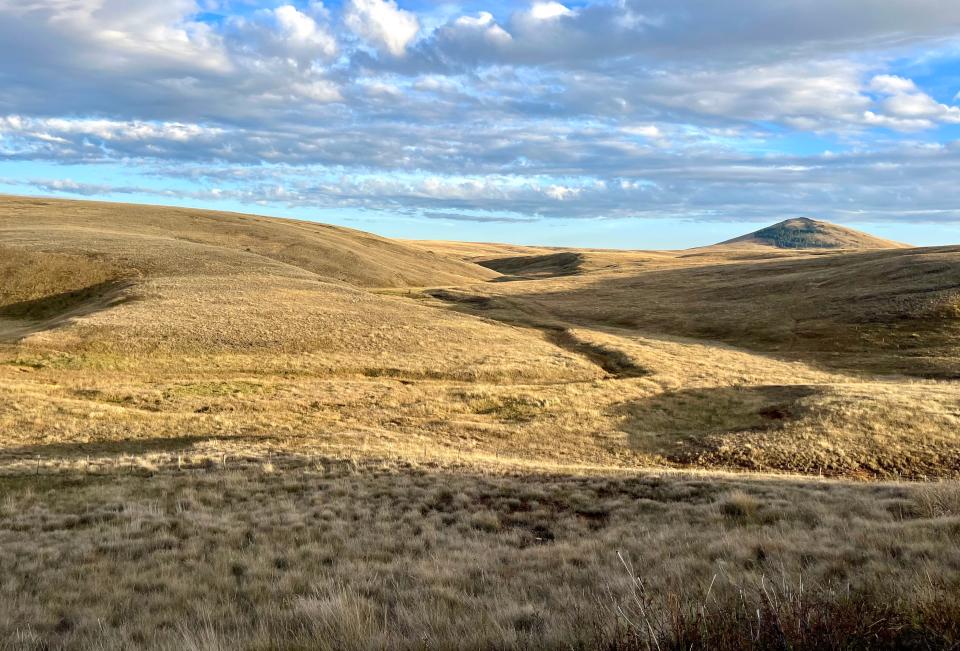
Still, Fields, who’s managed the 51-square-mile preserve since 2009, said he knows the extremely remote area is not for everyone.
Those who visit will want to make sure their vehicle has tough tires, as much of the prairie is only accessible by rough, rocky gravel roads. If, like me, you’re not the most directionally savvy, you’ll also want to download a map of the preserve to keep you in the right direction of whichever portion you want to explore.
The Nature Conservancy is also very strict on their leave no trace policy. Camping, building fires and hunting are prohibited. You also cannot bring your dogs or bikes so as to not trample or otherwise disturb the plants and animals.
The preserve is home to a dozen native bunch grasses and 100 wildflower species that support ground squirrels, weasels and other small mammals that in turn help hawks and eagles thrive.
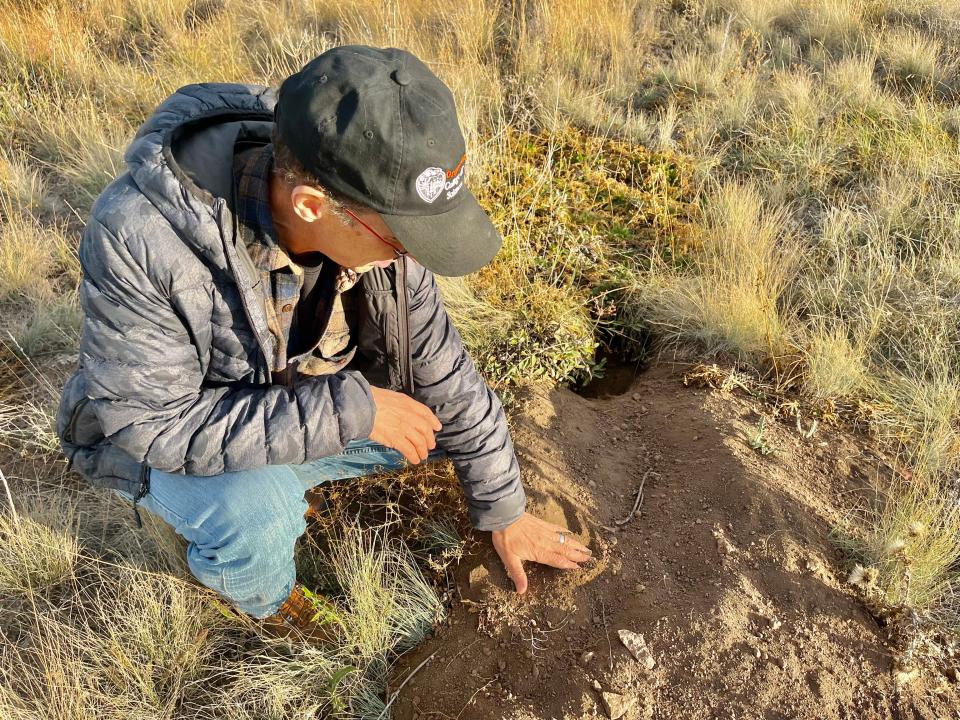
The Nature Conservancy claims the Zumwalt is home to one of the highest known concentrations of breeding raptors on the continent.
You may also run into signs of elk, mule deer, black bear and even cougar. Fields and I examined coyote and badger dens during my visit.
Research efforts
The diversity of life makes monitoring and research extremely important as well as challenging. Much of the prairie is used for livestock grazing, and balancing economic and conservation interests is delicate, Fields said. Ranchers work with The Nature Conservancy to determine best practices for sustainability, which determines things like how many cows they have at a given time or where on the land they graze.
Before managing the Zumwalt, Fields worked in forest and aquatic restoration, and he said this job is by far the most dynamic and difficult.
“There’s just more pieces in motion on the grassland, and these things happen on a quicker time scale,” he said. The Nature Conservancy is currently working on restoring riparian areas for fish and birds as well as improving stream function and growing vulnerable aspen and shrub communities.
Fields has the help of contractors and full-time employees who keep track of important species and general prairie health. While I was there, an Oregon State University class was staying on the prairie to learn from them and collect data.
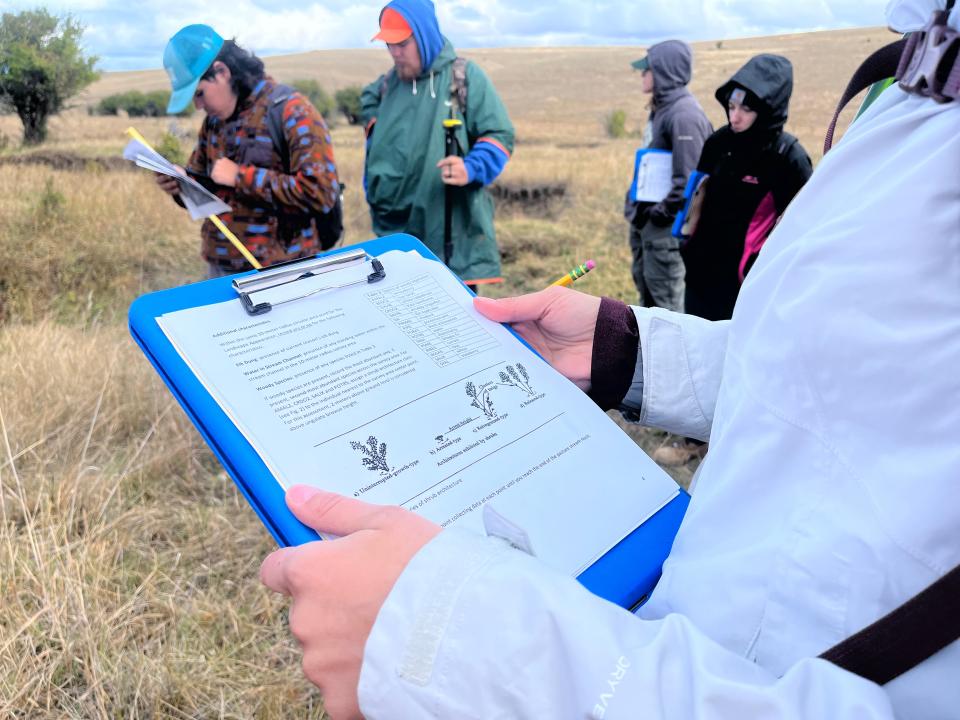
Environmental science major Noah Scharfstein, 21, said he’d never spent time in such a landscape before going for the class and was grateful for the hands-on experience in such an ecologically diverse, though traditionally undervalued, place.
“There are a lot of resources that go towards forest restoration, but it's not really like that in the prairies or in the grasslands — they're kind of overlooked,” Scharfstein said. He added when he goes back to Corvallis, he plans to spread the word about the importance of protecting the prairie for generations to come.
'People need to see these sorts of places, to know that they still exist'
Beyond the biological, the prairie’s success has cultural and community importance that The Nature Conservancy hopes to foster into the future.
At sunset, Fields and I were joined by John and Normandy Helmer, of Eugene, volunteer caretakers who have been coming up to support The Nature Conservancy’s work for three years. We drove up a hill to incredible views of the clear sky.
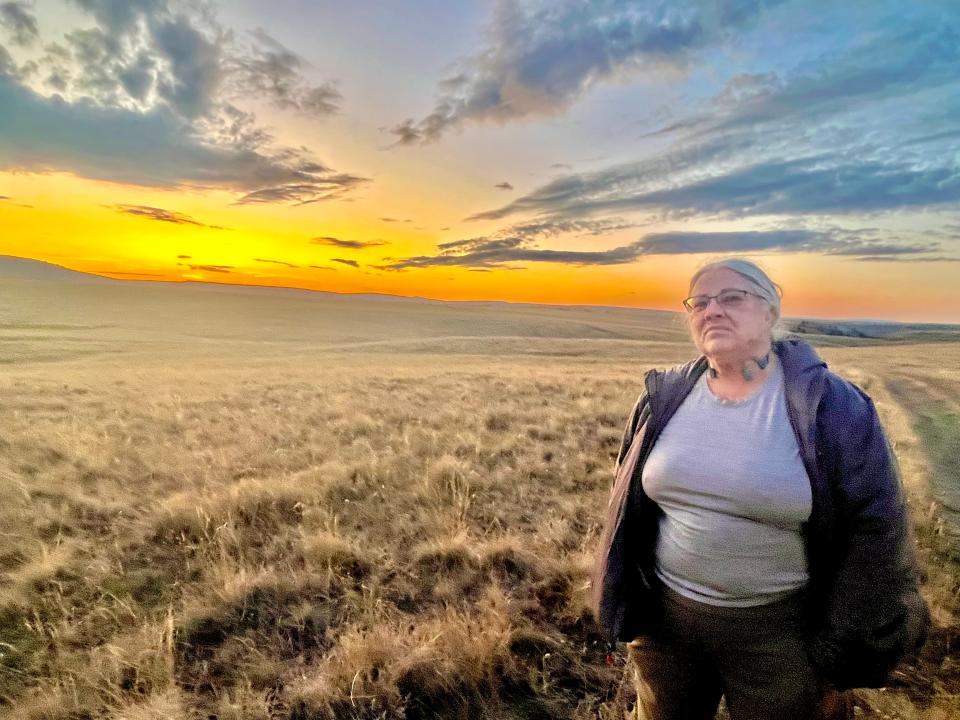
Normandy, an artist, uses the prairie as inspiration, and she’s not the only one. The prairie is a frequent place for those looking to connect and capture the vast expanse, especially through local organizations like Fishtrap, which frequently hosts workshops on the land.
“This landscape is so big that you can't cram all of it into your eyeballs,” Normandy said. “The land slopes really gently and beautifully, and the grasses are gold with green. And then you've got these gorgeous clouds, and you've got gold and red from the sunset. And it's different every day. And so I just come and try over and over again to paint these hills and try and get them right.”
Fields loves watching how others connect to the land. The Nature Conservancy now invites Nez Perce Tribe members to harvest first foods on the land and provides tours for students from university level to elementary school.
“People need to see these sorts of places, to know that they still exist,” Fields said. “And to know it is to care about it, and to care about it is to help work to maintain it … in a living together mindset. How do our people live on this landscape in a way that also honors everything else that lives on this landscape?”
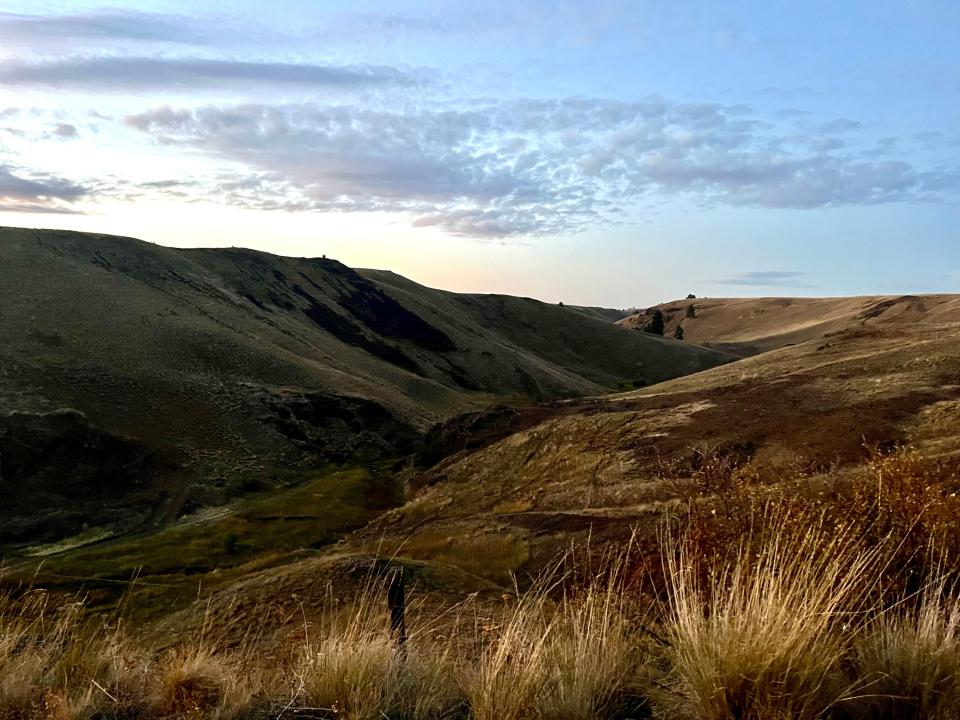
Hikes at Zumwalt Prairie Preserve
There are four public hiking trails at Zumwalt.
Patti's Trail is a 2.3 mile easy loop that brings visitors on old homesteader's fields and native prairie to the headwaters of Camp creek. Turn right onto Duckett Road and park at Duckett Barn. The sign indicating the start of the trail is across the road from the barn and information kiosk.
Harsin Butte Trail is 0.8 miles each way up and down the butte. There is no easily marked trail, but you can choose your own easily navigable path up and down. The butte is a 700 feet scramble with incredible views of the prairie and canyons. Turn right on Duckett Road and go 3.1 miles until reaching a road junket at the top of a hill. Park near the trailhead sign.
Canyon Vista Trail is the most remote trail, opening into beautiful wild country. The trail itself is 1.8 miles in and out, but getting there is the real commitment. Take Duckett Road 3.1 miles until reaching the junket at County Road 676. On this road, which may be impassible when wet or during winter, high clearance vehicles are recommended. Park near the trailhead at a green gate.
Horned Lark Trail loops through the Pine creek riparian area and diverse native prairie for an easy 1.9 miles. The trail itself is a bit difficult to follow, so check the trailhead sign for an idea of your path. Instead of turning at The Nature Conservancy sign on Duckett Road, continue straight for 3.1 miles until spotting the trailhead sign and fenced off prairie. Park on the shoulder.
Olivia Stevens is the Statesman Journal's fall 2023 outdoors journalism intern. She can be reached at OStevens@statesmanjournal.com or on Twitter @byoliviastevens.
This article originally appeared on Salem Statesman Journal: Experience Eastern Oregon's Zumwalt Prairie Preserve

